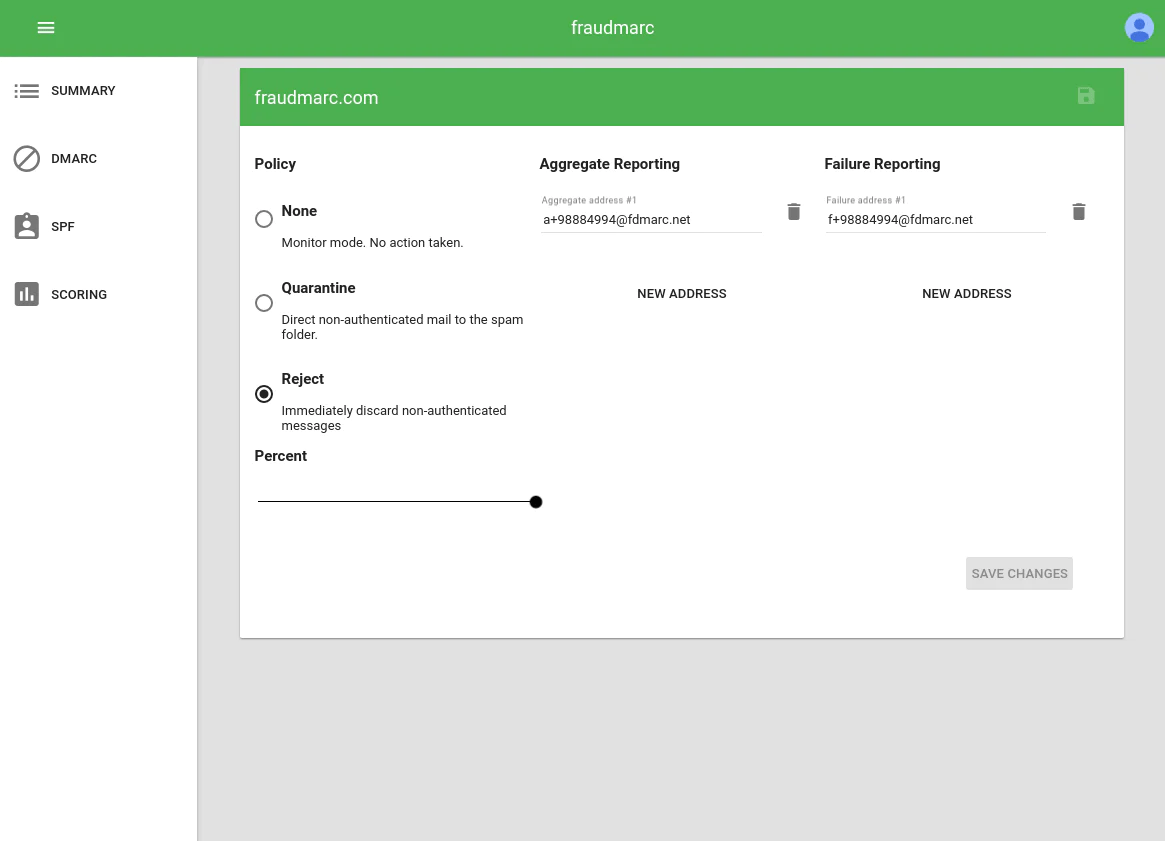Feature set
MailHardener provides a deep dive into DMARC reporting, offering granular insights into your email traffic. We found its interface to be highly detailed, allowing us to quickly identify and troubleshoot authentication issues across various sending sources. The platform's focus on email security extends beyond basic DMARC, incorporating tools for SPF, DKIM, and even MTA-STS.
We appreciate its robust policy enforcement capabilities, enabling a structured path to DMARC enforcement with clear visualization of aggregate and forensic reports. The system is designed to give technical users precise control over their email domains, ensuring that unauthorized senders are quickly identified and mitigated, thereby protecting brand reputation effectively.
Fraudmarc excels in offering a comprehensive suite of DMARC reporting and management tools, with an emphasis on simplifying complex data. We found its reports to be well-structured and easy to digest, which is crucial for quick decision-making regarding email authentication. The platform is geared towards helping organizations achieve compliance and improve deliverability through actionable insights.
Our experience shows that Fraudmarc provides strong capabilities for managing DMARC policies, along with features to assist with SPF and DKIM. It aims to provide a clear path to DMARC enforcement, allowing users to understand their email ecosystem and move towards a reject policy with confidence. The platform offers a balanced approach, making advanced email security accessible.











































 0 / 5(0)
0 / 5(0)
 0 / 5(0)
0 / 5(0)



